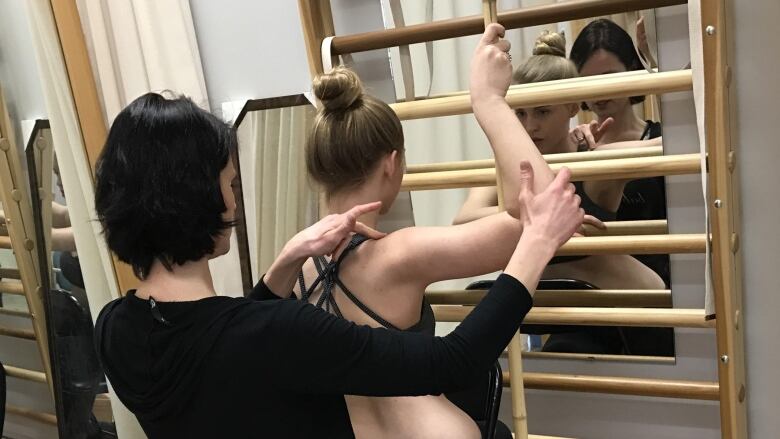'Results were amazing' when teens with scoliosis did specialized exercises
Exercises teach teens with curved spines to move with their posture in corrected way

Teens with curved spines from scoliosis can improve their pain, severity of curvature and quality of life by adding specialized physical therapy exercises, a small Canadian randomized trial shows.
Scoliosis results in a sideways curvature of the spine and trunk that occurs more commonly in adolescent girls. To the naked eye, the spine appears crooked and the shoulders, hips, and waist look uneven.
It can lead to mental health concerns, back pain and respiratory complications, experts say.
- After painful surgery and recovery, Oakville teen not just a model,but role model too
- Teens' scoliosis helped with braces
The current standard of care in North America is for surgeons to wait and see how the curve progresses with X-rays.
Braces can be used but if the curvature reaches 45 degrees then surgery is often recommended.
As a registered kinesiologist and therapist in Serbia, Sanja Schreiber used corrective gymnastics, pilates and yoga to treat patients with scoliosis. Then she came across scoliosis-specific exercises, called Schroth, and saw tremendous results.

When Schreiber came to Canada in 2009 for her PhD, she put Schroth to the test in a randomized control trial of 50patients aged 10 to 18 with curves of 10 degrees to 45 degrees. Part of the results have been published in the journal PLOS One.
"After a six month trial, the results were amazing," Schreiber said in an interview on Wednesday from Edmonton. "When you define a successful treatment as keeping the curve stable or improving, in the scoliosis group there were 88 per cent who were successfully treated compared to 60 per cent in the control group."
Schroth involves not only doing daily exercises for 30 to 45 minutes but also teaches patients how to keep their spine corrected throughout the day, said Schreiber, a researcher with the University of Alberta's Faculty of Rehabilitation Medicine. She summarizes it as "always push against the curve."
"We teach patients to unlearn what they learned and teach them to stand in a different way, to move in a different way, to move their posture all the time in the corrected way until their brain gets that and starts thinking this is the new normal."
Ava, 14, was one of the Schroth participants. She was diagnosed at age 11 and does not want her surname used.
"I don't have nearly as much severe pain as I used to," she said. "It's not as often."
For Ava, the pain most commonly occurs in her lower back, neck and shoulders.
Learning Schroth was challenging, especially at first, she said.
"I genuinely did enjoy working with Sonja and learning the exercises. I learned a lot both in terms of controlling myself and how I handle other situations."
Schreiber's randomized trial has been expanded to Calgary and Montreal. She hopes that the exercises will eventually be incorporated by surgeons as part of the standard of care for patients with scoliosis.
With files from CBC's Amina Zafar












_(720p).jpg)


 OFFICIAL HD MUSIC VIDEO.jpg)
.jpg)



























































































